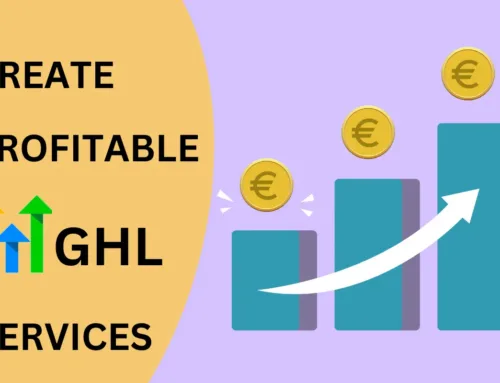What do you think makes a company’s digital marketing strategies successful? How do they measure if their business’ marketing performance is doing great or not? Do you have any clue?
 That is the reason why Key Performance Indicators (KPI) are here to help you understand what part of your marketing is working and what is not working. KPI monitoring is a crucial part of your business’ growth strategy. Surviving businesses, and even those new in the industry, should have no lacking knowledge to understand and assess their marketing efforts. It is already the 21st century my dear colleagues: if you have many gaps in your structure, then you might miss many things that will make your business attain its goals.
That is the reason why Key Performance Indicators (KPI) are here to help you understand what part of your marketing is working and what is not working. KPI monitoring is a crucial part of your business’ growth strategy. Surviving businesses, and even those new in the industry, should have no lacking knowledge to understand and assess their marketing efforts. It is already the 21st century my dear colleagues: if you have many gaps in your structure, then you might miss many things that will make your business attain its goals.
Everything should be defined clearly even when the company’s marketing endeavors tank. You should keep track of all the efforts that you do. All of your marketing efforts should be measurable. There is no reason for not knowing how your marketing hit the golden jackpot or how your marketing stumbled in the mud. Good business marketing takes a while, so start investing some time to understand your marketing KPIs immediately.
A lot of marketing KPI examples are everywhere, and all of which seem to perfectly fit your company’s marketing strategies. If you only did simple research regarding different kinds of marketing KPIs and tools for measuring marketing KPIs’ success, there is a high chance of jumbling them or using them in an appropriate situation.
Here are some examples of marketing KPIs that you might need.
- Sales Growth. The most effective way to assess your marketing’s performance is by sales revenue. This is not as easy as you think. You must be patient. After measuring the possible effect of marketing on the growth of your sales, do further analysis on the factors that contribute the most and the least. It’s like pulling out all the weeds out of flowering plants. Monitoring and measuring your sales growth is crucial for the long-term health of your company. Apart from being a good indicator, sales growth itself will also help you identify growth trends.Never hesitate to share your sales status with your employees as well. If everyone feels that they are 100% part of the company, they might be driven give their best at work, making it clear that everyone in the organization is reaching the same star and rowing the same boat of fate.
- Leads. Mathematics can be applied here. Having greater leads will result in greater sales opportunities, and greater sales opportunities mean greater possibilities for sales growth. Leads are like the batteries of a flashlight. The thing that drives both marketing and sales department is the company’s leads.However, not all leads are created the same. You must be aware of the difference between Marketing Qualified Lead (MQLs) and Sales Qualified Leads (SQLs). These indicate different phases of the same lead.
- Marketing Qualified Lead (MQL) is a lead that has a higher chance of being a customer. They are the leads who have implicitly agreed (say by downloading an app or eBook) and identified themselves as more deeply engaged, a one-call-away customer than your other usual leads. But, they have not yet become a fully grown opportunity.
- Sales Qualified Lead (SQL) is the lead that is worthy of a direct sales follow-up as assessed by your sales team. SQLs are further evaluated before indicated as a matured prospective customer that is ready to make a decision.
It is important to understand the difference between MQLs and SQLs because they play a crucial part in identifying your company’s leads-to-close ratio. The number of leads received over a specific period of time divided by the actual amount of leads closed is known as the close ratio.
- Lifetime Value of a Customer (LTV). Customers keep your business alive. So, what is the worth of your customers to your business over the lifetime of your relationships? Do you have any idea? Is it the first time you’ve heard about it?In reality, the thought of evaluating how worthy your customers are seems a little bit discouraging but there is a great reason why you need to. This is the kind of KPI that can measure your company’s return on investment (ROI) to help make decisions and manipulate future business goals. Although not 100% exact, calculating the lifetime value of a customer involves reckoning out all the sales initiated by your average customer over the course of your relationship.
LTV=Revenue x Gross Margin x Average no. of repeat purchases
What are those? Let’s break down the key components, namely revenue and gross margin:
- Revenue is the amount of money that the company receives during a particular financial period. Revenue is calculated by multiplying the selling price of sold units by how many units are sold. Total revenue or total sales is not equivalent to profit.
- Gross Margin is the percentage of total sales revenue that the company retains as gross profit after deducting all the direct cost of the goods or services sold.

- Website Traffic. Just as cars make heavy traffic on the road, visitors make heavy traffic on your website. These people transform from potential leads into prospective customers. Are they really important?The answer is YES. Having a profound understanding of your website traffic is equal to figuring out the behavior and background information of your visitors. Internalizing all of this information will assist in determining what they really want from you. Marketing is all about knowing what things linger inside the minds of potential customers.
You may think of web traffic as a common term, but the idea behind it consists of many things. Each of them is greatly measurable and heavily related to engagement. These are the following:
- Sessions
- Users
- Page visits
- Page per session
- Rebounds or bounce rates
- Average session duration
- Social Media Reach and Engagement. Your social media tactics play an important part in your inbound marketing efforts because they allow you to allocate content and engage with your current and prospective customers.An effective way of evaluating this kind of KPI is to track your growth (same as the Likes and Shares on Facebook and the number of followers on Twitter). Both of the given social media platforms are designed for tracking and analyzing data, making it incredibly accessible when needed. Engagements on these sites can also be tracked by using metrics that determine lead conversions, customer conversions and percentage of web traffic related to the activities of your social media. For further clarification, be reminded that not all of the social media platforms like Facebook, Twitter, Instagram or Pinterest will work for your business. So it’s better to keep tracking and assessing the ones that really drive your revenue.
- Email Marketing Performance. Email marketing strategy acts as a support to your customer, of course apart from the social media. Every email marketing campaign should be analyzed at least three times before the execution.Analysis of email marketing is broad because it includes its very own set of KPIs, of which every single type has different qualities. Here are some examples:
-
- Delivery Rate
- Open Rate
- Unsubscribed Rate
- Click Through Rate
- Conversion Rate
- Forward/Shares
- Inbound Link Building. Link building is one of the pillars of your SEO strategy. If someone within the same industry as yours leaves links of your website on their site it means your one step ahead in building a community of your own field. The greater the number of people that link to your site as an authority, the better is the traffic in can give to your website. Thus, you will have more chance of having a higher ranking.If there are good links there are also bad links. It is better to have quality links from other respected industry source, as well as links that can affect Google’s algorithm.
- Landing Page Conversions. Landing pages usually give the first impression to your visitors. If it doesn’t draw people in and convert them, you’re literally like a spider trapped on its own web. So, how can you measure if your landing pages are doing their job? Evaluate the number of people who view them and determine if your CTAs (Calls to Action) are converting them.Landing pages are designed solely to engage website visitors into a conversion. You may need some SEO improvement if your landing pages stink. Your conversion rate will suffer if you don’t implement preventive actions.
- Blog Post Visits. Observing the performance of your blog posts is also an effective way to understand your customers’ behavior. It will help you know what they like to read and when. This will create your brand equity and will allow you to grab the opportunity of making content that will be appreciated and valued by the customers.Blog posts should drive good website traffic. Marketing professionals consider blog posts as a major contributor to attract more visitors. There are two ways they can bring traffic to your website. First is via distribution when is it published on social media sites and when it reaches people in your email list. Second is by acquiring a rank in search engines for your target keywords. Maintaining the overall quality of your content is important. It is easy to start a blog, but consistency is the hardest part. Stay active with your content and do your best to improve your blog performance.
Also, whether you work in the B2B or B2C world, you should track your marketing KPIs and validate your marketing efforts. Countless ways of measuring marketing KPIs are available today, it’s just a matter of prioritization. All you need to do is invest, assess, and persevere. Then you are a step ahead in reaching your goal.
After discussing some of the KPIs that might help you, let us now talk about the tools that will help you master and measure your marketing KPI. Some can also identify and monitor your KPIs, check your account status and ensure that you’re generating the most out of your marketing efforts. Here are the latest comprehensive and advanced tools to help audit your past campaigns.
Basic Tools
- Google Analytics is the most trusted and used analytics monitoring tool globally. The basic version of Google Analytics can be used unrestrictedly. This means it is free yet gives a clear view of the metrics from a single panel. It easily generates those reports for your convenience.
- YouTube Analytics can help you monitor the ranking status of your videos published on YouTube. This tool can give you data regarding your videos such as time spent, sources of traffic, location of the audience, playback locations and others in a real time basis.
- Facebook Page Insights lets you see how your business page is doing. You can set your marketing KPIs in order to optimize your Facebook results. The age of your target market and even their gender and location can be filtered to generate greater insights. Its system is designed to keep tracking the number of people who can see your posts, which posts attract more viewers and which ones direct the most to visit your home page.
- Customer Relations Marketing, on the other hand, keeps track of all customers’ touchpoints. Make sure that your CRM accommodates the business as a whole and not just on customer communication itself.
- Email Marketing Tools can provide good email marketing services. Constant Contact, MailChimp and ConvertKit are some of its variants. These tools can help you monitor the performance of your email marketing campaigns. Just make sure that the ones you will choose can support the kind of business goal you want to achieve.




